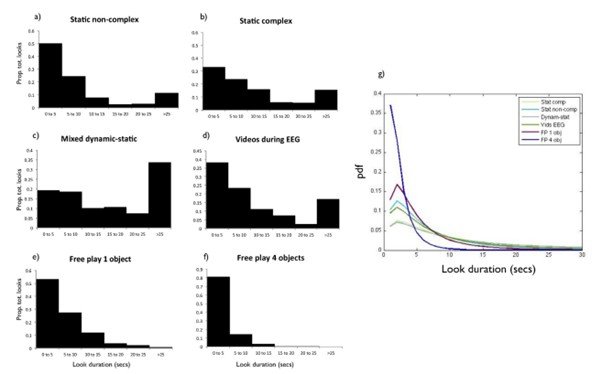RESEARCH
PUBLICATIONS
Search by keyword:
Browse by topic:
Robustness and precision: how data quality may influence key dependent variables in infant eye-tracker analyses.
Wass, S.V., Forssman, L. & Leppänen, J. (2014). Robustness and precision: how data quality may influence key dependent variables in infant eye-tracker analyses. Infancy 19(5), 427-460. https://doi.org/10.1111/infa.12055
Comparing methods for measuring peak look duration: are individual differences observed on screen-based tasks also found in more ecologically valid contexts?
Wass, S.V. (2014). Comparing methods for measuring peak look duration: are individual differences observed on screen-based tasks also found in more ecologically valid contexts? Infant Behavior and Development. 37(3), 315-325. https://doi.org/10.1016/j.infbeh.2014.04.007
Widely applicable MATLAB routines for automated analysis of saccadic reaction times.
Leppänen, J., Forssman, L., Kaatiala, J., Yrttiahoa, S. & Wass, S.V. (2014). Widely applicable MATLAB routines for automated analysis of saccadic reaction times. Behavior Research Methods. https://doi.org/10.3758/s13428-014-0473-z
Visual motherese? Signal-to-noise ratios in toddler-directed television.
Wass, S.V. & Smith, T.J. (2014). Visual motherese? Signal-to-noise ratios in toddler-directed television. Developmental Science. 18(1), 24-37. https://doi.org/10.1111/desc.12156
Individual differences in infant oculomotor behavior during the viewing of complex, naturalistic scenes.
Wass, S.V. & Smith, T.J. (2014). Individual differences in infant oculomotor behavior during the viewing of complex, naturalistic scenes. Infancy 19(4), 352-384. https://doi.org/10.1111/infa.12049
Applying cognitive training to target executive functions during early development.
Wass, S.V. (2014). Applying cognitive training to target executive functions during early development. Child Neuropsychology. 21 (2), 150-166. https://doi.org/10.1080/09297049.2014.882888







